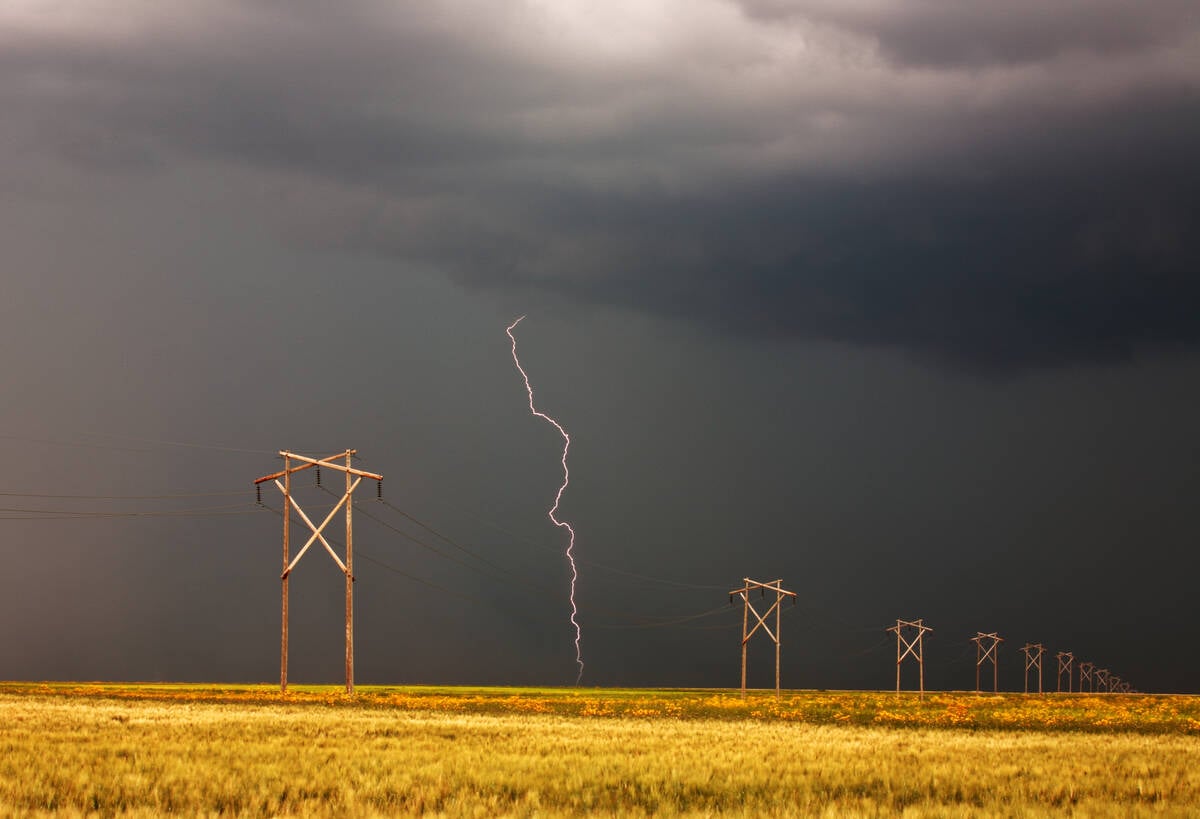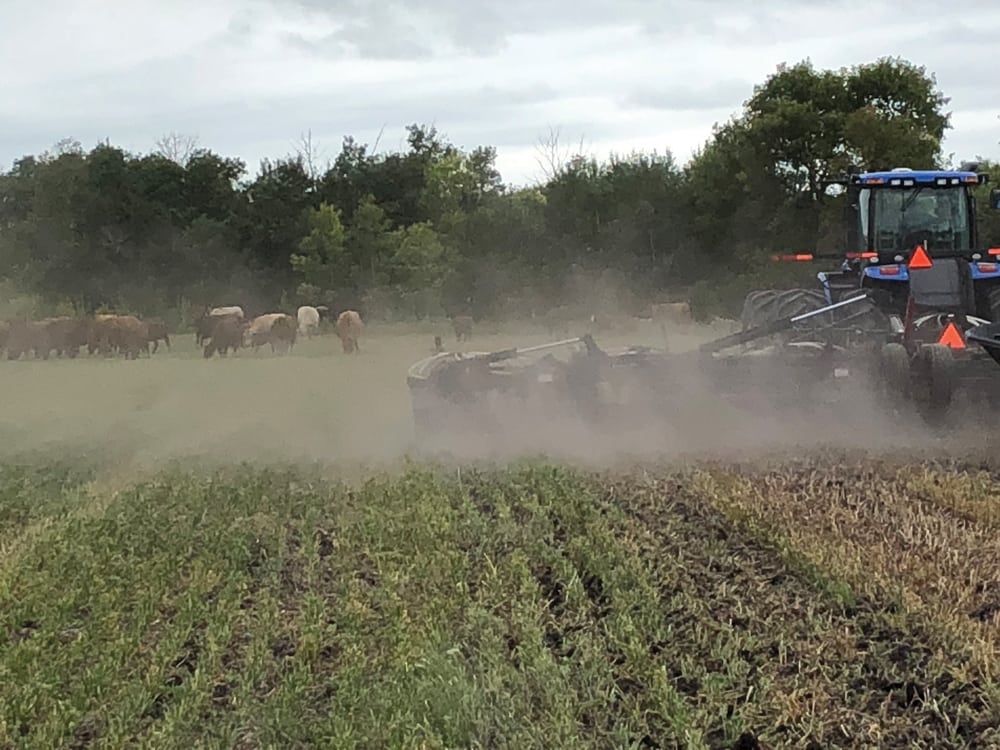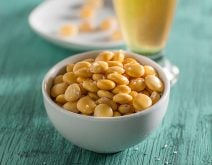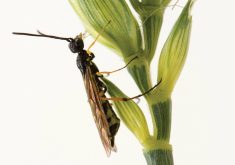This harvest, farmers in southwestern Manitoba and southeastern Alberta are dealing with dry weather, while producers in northwestern Saskatchewan have excess moisture.
This summer Grainews has been talking to three farmers from three provinces about how they manage their rotations. The idea is to see how producers manage longer rotations and what are the benefits and challenges. This is the second article in a three-part series. It provides a pre-harvest update on the growing season.
Shaun Cory
Nesbitt, southwestern Manitoba
Read Also

Lightning gives and takes in Prairie fields
Lightning in fields can be a source of nitrogen but at times can result in crop damage which, at a glance, resembles a very localized disease outbreak, plant pathologist Ieuan Evans writes.
2018 crops: Fall rye, hairy vetch, canola, peas, oats, flax, spring wheat, soybeans and oats. Intercrops and monocrops.
Reached on July 31, Shaun Cory’s farmland had enough rain to keep most annual crops in good condition. But his soybeans would need more rain to fill pods.
Pasture and hay land looked dry as well. Cory said they may have to bring cattle home early from one pasture. They took oats and peas off a field for silage earlier in the summer, then fenced that field for grazing. On the day of the interview, they were sowing cover crops into that field.
Originally the Cory family had planned to broadcast the cover crop with an old high-clearance sprayer. But they settled on a drill instead. “As dry as it is, I think spreading it on top is maybe a little too risky.”
Cory hopes the cover crops will provide good fall grazing. “But that will require another rain.”
He also had two fields of rye and hairy vetch where the vetch didn’t winter well. One field recovered. The other did not.
They did apply fungicide to most of their crops, but disease won’t be a problem this year, said Cory.

“Sometimes when you’re spraying it things are a little bit borderline as far as whether you should be or not. We just never got the extra moisture and the extra humidity.”
The Cory farm hasn’t had any insect issues this year. They are seeing more kochia than usual, he said.
Crops are a bit early in development, he added.
“Our flax is already turning a bit brown, so that could be a rare August flax harvest.”
Rodney Volk
Burdett, southeastern Alberta
2018 crops: Yellow field peas, durum, hard red spring wheat and pinto beans.
Hot, dry weather has hastened crop maturity in Rodney Volk’s area. Reached on August 3, Volk was readying his harvest equipment. A local farmer was combining the dryland corners that day. Volk estimated he was a week and a half to two weeks from harvest.
Many of Volk’s crops looked good, but others struggled. His peas weren’t going to yield nearly as high as he’d hoped. Hot weather caused bloom blast, he said, so some pods didn’t develop.
“The durum on the dryland is lacking moisture right now,” said Volk. Still, while the durum wasn’t going to be a great crop, he thought it should be decent.
Volk was still irrigating his pinto beans and some of his wheat to maximize yield potential. The spring wheat under irrigation had finished flowering, and was probably three weeks away from combining, Volk said. The beans had four-inch pods at the bottom, and were still flowering on the top.

One upside to the hot, dry weather was that disease hadn’t been an issue, even in Volk’s irrigated crops.
“And no major insect problems so far.”
Volk also has cattle and pasture. The dry weather taxed native pasture in his area. On hilltops, the grass had shut down. Fortunately, Volk has low-lying pasture as well.
“There’s still fairly good moisture in the low spots. There’s a high water table,” he said.
Bernie McClean
Medstead, northwestern Saskatchewan
2018 crops: Canola, malt barley, oats and hay (alfalfa, brome, timothy mix).
Wet weather has been Bernie McLean’s biggest challenge this year. He’d hoped to finish haying by the third week of July. But in the first 16 days of July, he got five inches of rain.
“I had one bale made yesterday and then it showered.”
Still, he’s not complaining. Haying is progressing. And as of July 31, his annual crops looked good. Insects haven’t been a problem this year. Hail did hit his canola in early July, and the insurance adjusters concluded there was enough damage for compensation.
McLean’s crops have escaped disease. He sprayed his malt barley with a fungicide, which is routine. Usually he sprays wheat with fungicide as well. But due to the late spring, he didn’t seed wheat.
Spraying canola for sclerotinia is a tougher decision. This year it was so hot and dry before flowering that McLean didn’t apply fungicide. McLean checked his canola closely afterward and didn’t find disease.
McLean’s canola is about three to five days early. The malt barley will probably be slightly later than normal, as a dry spell after seeding led to uneven emergence.
One correction: The first story conflated two of McLean’s fields that he’s turning to pasture. He has a half section, newly seeded to grass, that he planned to stock with bison by January. However, he’s decided to push the stocking date to next spring.
He also has a hayfield that he plans to fence and stock in the next two years. After making a few passes with the haybine this summer, he nearly got stuck twice, reaffirming his decision to convert it to pasture.
Rather than having equipment on that wet field, “I need four-legged harvesters out there,” says McLean.
















